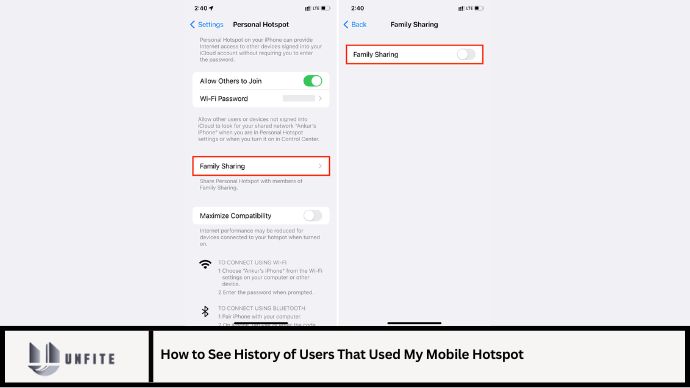How to See History of Users That Used My Mobile Hotspot

If you’ve ever wondered who has connected to your mobile hotspot or need to monitor usage for security or data management reasons, this guide will walk you through the steps to check the history of users. Understanding how to view this information can help you maintain control over your network and ensure it’s used responsibly.
Understanding Mobile Hotspot Usage History
A mobile hotspot allows you to share your mobile data connection with other devices like laptops, tablets, or other smartphones. Monitoring the history of users who have connected to your hotspot can provide insights into usage patterns and help manage security.
Methods to See History of Users That Used My Mobile Hotspot
Here are several methods to check the history of users who have connected to your mobile hotspot:
Access Router Settings:
Login to Admin Panel: Enter your router’s IP address in a web browser to access its settings. Look for a section on connected devices or DHCP client list to view connected devices.
Use Mobile Hotspot App:
App Features: Some mobile hotspot apps provide logs or histories of connected devices. Check the app settings or logs section for this information.
Check Network Usage Reports:
Data Usage Section: On your mobile device, navigate to settings and find the data or hotspot usage section. Some devices list connected devices along with data usage details.
Review Device Logs:
Detailed Logs: Advanced users can review logs on their mobile device or router to track connected devices and their activity timestamps.
Third-Party Monitoring Tools:
Software Solutions: Consider using third-party network monitoring tools that offer features to track connected devices and their usage history.
Tips for Monitoring Mobile Hotspot Usage
- Regular Check-ups: Periodically review the list of connected devices to ensure unauthorized users are not accessing your hotspot.
- Password Security: Use a strong password for your mobile hotspot to prevent unauthorized access.
- Update Firmware: Keep your router or hotspot device firmware updated to utilize the latest security features.
FAQs
1. Can I see the browsing history of devices connected to my mobile hotspot?
No, you cannot see the browsing history of devices connected to your hotspot. You can only view the list of connected devices and their usage.
2. How can I block someone from using my mobile hotspot?
Access your router settings or mobile hotspot app to block specific devices by their MAC address or IP address.
3. Is it legal to monitor who connects to my mobile hotspot?
Yes, it is legal to monitor the devices connected to your own mobile hotspot for security and network management purposes.
4. Can I see who used my hotspot if I reset it?
No, resetting your mobile hotspot typically clears all logs and connected device history. It’s advisable to check before performing a reset.
5. Can someone connect to my hotspot without me knowing?
If your hotspot is unprotected or the password is compromised, someone can connect without your knowledge. Always secure your hotspot with a strong password.
Conclusion
Monitoring the history of users who connect to your mobile hotspot is essential for managing network security and data usage effectively. By using the methods outlined in this guide, you can stay informed about who accesses your hotspot and ensure it’s used responsibly. Whether through router settings, mobile apps, or network monitoring tools, understanding these steps empowers you to maintain control over your mobile hotspot and safeguard your connection.
In conclusion, keeping track of who uses your mobile hotspot helps in maintaining security and managing data effectively. By following the provided methods and best practices, users can ensure their hotspot is used responsibly and protect their network from unauthorized access.



